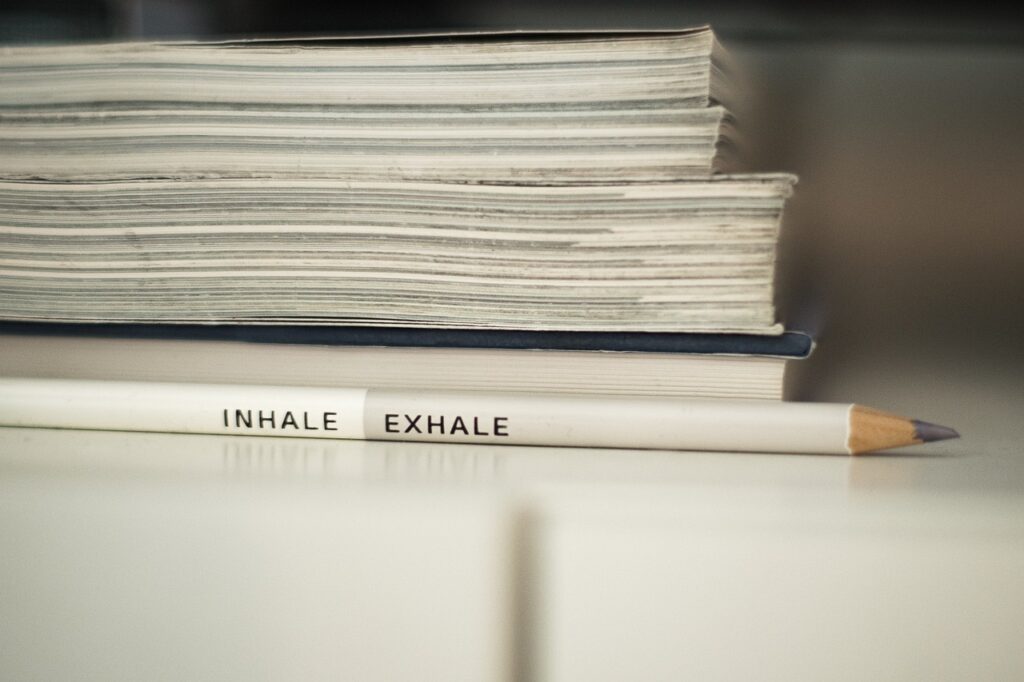Are You Breathing Incorrectly During Workouts? Find Out!
Breathing is something we do every day, yet its role during exercise often goes unnoticed. Proper breathing is vital for maximizing workout benefits, as it directly influences our stamina, cardiovascular health, and stress management. When we breathe effectively, our body performs better, using oxygen more efficiently and helping us stay energized throughout our workouts.
When we work out, we often focus on pushing harder, lifting heavier, or running faster. But one essential factor that’s frequently overlooked is breathing—how we breathe, especially through the nose, can elevate our performance and make workouts far more effective. Each breath supplies oxygen, powers our muscles, and affects our endurance and heart health.
Breathing through the nose might feel challenging initially, especially as workout intensity rises. However, training yourself to inhale and exhale through your nostrils supports greater aerobic efficiency and strengthens blood vessels, helping you sustain energy over time. Nasal breathing can turn a workout into a meditative experience, anchoring you in each moment and enhancing your connection with the body.
Why Breathing Matters: Connection Between Body and Breath
During exercise, our bodies rely on a synchronized effort between the muscular, cardiovascular, and respiratory systems. Muscles need a constant supply of oxygen to function optimally, while the cardiovascular system ensures this oxygen reaches muscles through efficient blood circulation. Breathing bridges these systems, supporting oxygen intake and removing carbon dioxide, the waste produced during exertion.

But breathwork goes beyond just oxygen; it directly impacts heart rate, energy levels, and muscle efficiency. Consistent, intentional breathing—especially through the nose—helps control heart rate, supports muscle performance, and reduces unnecessary stress, ultimately enhancing your overall workout impact. Embracing proper breathing techniques is a simple yet powerful way to elevate your fitness journey.
Benefits of Nasal Breathing During Exercise
- Aerobic Efficiency: Breathing through the nose during exercise boosts aerobic capacity by allowing the body to absorb and utilize oxygen more effectively. Unlike mouth breathing, which can lead to over-breathing and less efficient oxygen exchange, nasal breathing helps filter, warm, and humidify the air. This improves oxygen flow, reducing energy drain while also filtering out particles, making each breath cleaner and more beneficia.
- Nitric Oxide Production: Nasal breathing stimulates the production of nitric oxide, a molecule essential for expanding blood vessels and enhancing blood flow. This helps transport oxygen to muscles more efficiently, building endurance and supporting cardiovascular health by strengthening blood vessel function. Regular nasal breathing can improve stamina over time, making workouts feel more sustainable and effective.
- Stress Reduction: Nasal breathing activates the parasympathetic nervous system, promoting relaxation and countering the “fight or flight” response. This response, often triggered by mouth breathing during high-intensity workouts, increases stress and heart rate. By focusing on slow, controlled nasal breaths, you can enjoy a calmer workout experience that supports recovery and reduces overall stress levels.

Incorporating nasal breathing can be transformative, helping you stay calm, energized, and resilient throughout your fitness journey.
The Mental Battery: Reducing Exercise Intensity to Maintain Nasal Breathing
I like to think of our energy during exercise as a “mental battery.” Just like any battery, it has a limited charge, and the way we manage it can make all the difference in how we feel and perform. When you’re working out, the urge to switch from nasal to mouth breathing is a signal that your battery is running low. Instead of pushing through and draining energy, try reducing the intensity of your workout until you can comfortably maintain nasal breathing.

While there are multiple techniques of breathing for purposes like relaxation, sleep, mindfulness and so on, you need to breathe differently while working out for the best results. Nasal breathing allows for a steadier, more sustainable flow of oxygen, which prevents unnecessary energy drain and supports a calm, controlled rhythm. When we push ourselves to breathe through our mouth, it may feel like we’re taking in more air, but we’re actually adding strain to the body and depleting our “battery” faster. By keeping the intensity manageable, we’re able to keep our energy steady, making each workout feel more sustainable and enjoyable.
Start by finding a pace where nasal breathing feels natural, then gradually build intensity over time.
Practical Steps for Implementing Nasal Breathing
To effectively incorporate nasal breathing into your workouts, it helps to start small and build up. Here are three practical steps to get you started:
- Start Small: If you’re new to nasal breathing, begin by lowering your workout intensity to maintain steady, controlled breaths through your nose. For example, if you’re running or lifting weights, ease up on your speed or resistance until you feel comfortable breathing exclusively through your nostrils. Gradually increase the intensity as your nasal breathing endurance builds. This approach helps you adapt without overstressing the body..
- Practice Diaphragmatic Breathing: Incorporate deep, diaphragmatic or “belly” breathing into your routine. This technique, where you focus on breathing from your diaphragm rather than your chest, strengthens respiratory muscles and makes it easier to stick with nasal breathing even during intense workouts. Practice it during warm-ups or cool-downs by placing a hand on your belly and inhaling deeply through your nose, feeling your abdomen expand. Diaphragmatic breathing not only reinforces nasal breathing but also reduces stress and promotes steady oxygen flow.
- Try Alternate Nostril Breathing: To further improve breath control, add alternate nostril breathing to your practice. This yogic technique balances the respiratory system and calms the nervous system, making it easier to maintain nasal breathing under pressure. Start by closing your right nostril with your thumb, inhaling through the left, then switching to exhale through the right. Repeat for several breaths. This practice helps condition your body for nasal breathing, even when your workout intensity rises.

Special Considerations for Those with Health Conditions
While the steps above can be very effective, people with pre-existing health conditions must always exercise caution. If you have breathing difficulties, blood pressure, or cardiac ailments, please do not push yourself when it comes to physical activity.
It is essential that we all use a generous dose of Vitamin C, common sense, while bringing changes to our physical activity levels, meal plans, workouts, or routines.
For individuals with high blood pressure, respiratory issues, or heart conditions, caution is essential when introducing new breathing techniques into a workout routine. Nasal breathing, while beneficial, may require adjustments, particularly during high-intensity exercise, as it can initially feel restrictive.
People with these conditions should approach nasal breathing gradually, starting at low intensities and progressing at a comfortable pace.
For those with heart conditions, it’s especially important to have medical supervision.
High-intensity workouts can increase cardiovascular strain, and attempting advanced breathing techniques like nasal breathing could put unnecessary pressure on the heart. If you’re an athlete or sportsperson, always take the help of experts with your Sports Nutrition and Training practices. Consulting with a healthcare provider ensures that any adjustments align with your unique health needs and capacities.

Always listen to your body and make incremental changes, prioritizing safety over speed. With a gradual, supervised approach, individuals with health conditions can benefit from improved breath control while minimizing risks.
Final Word: Empower Your Workouts with Breath
Your breath is more than just a source of oxygen—it’s a powerful tool that, when harnessed correctly, can transform your workout experience. Nasal breathing trains your body to work with intention and efficiency, keeping you calm and energized while building stamina and resilience. Every focused breath grounds you, fueling your muscles, stabilizing your heart rate, and supporting steady progress. So, in your next workout, tune into your breath, embrace the power it holds, and watch as your body responds with strength and vitality. With every inhale and exhale, you’re not just moving; you’re empowering your body to thrive.
Ready to take the first step towards self-mastery?
Start small, with one manageable change today.
Sign up for our, Wellness Program here.
Need personalized guidance? Speak with our Wellness Counselors.
Set up a one-on-one consultation with our integrative team by reaching out to us at
1800 102 0253 or write to us at consults@lukecoutinho.com.
Disclaimer: Always make an informed choice. Keep your healthcare provider in the loop before trying anything new, especially if you are going through a medical condition or are on medications.
|
From a pimple to cancer, our You Care Wellness Program helps you find a way Talk to our integrative team of experts today 18001020253 |










Leave a Reply